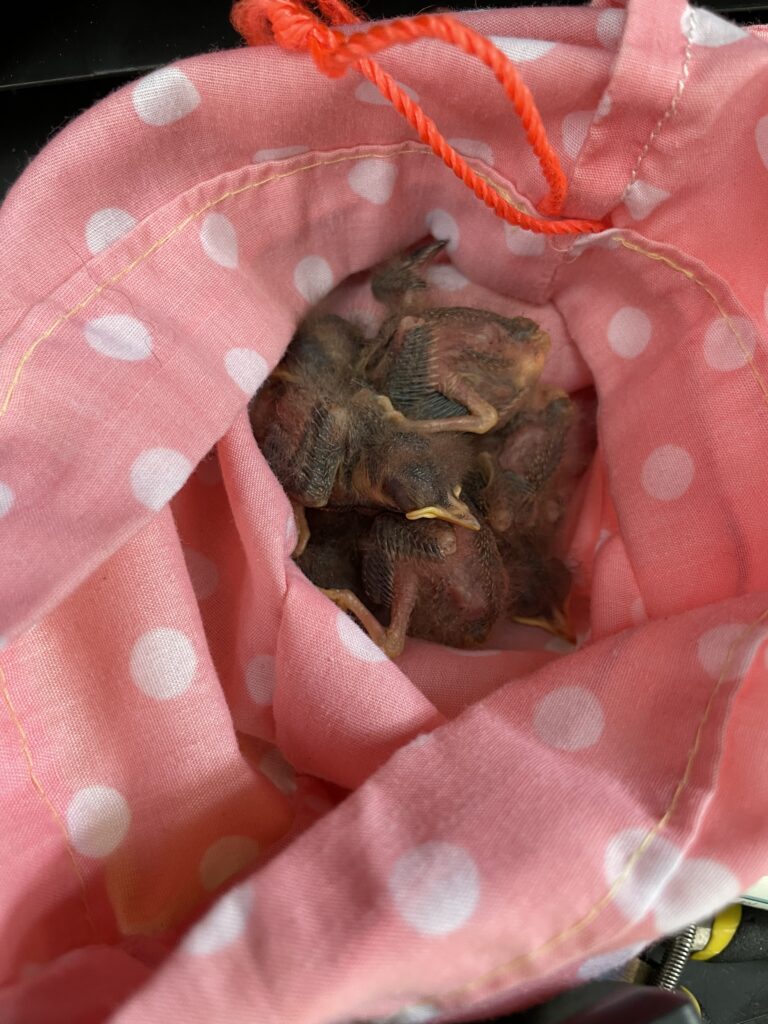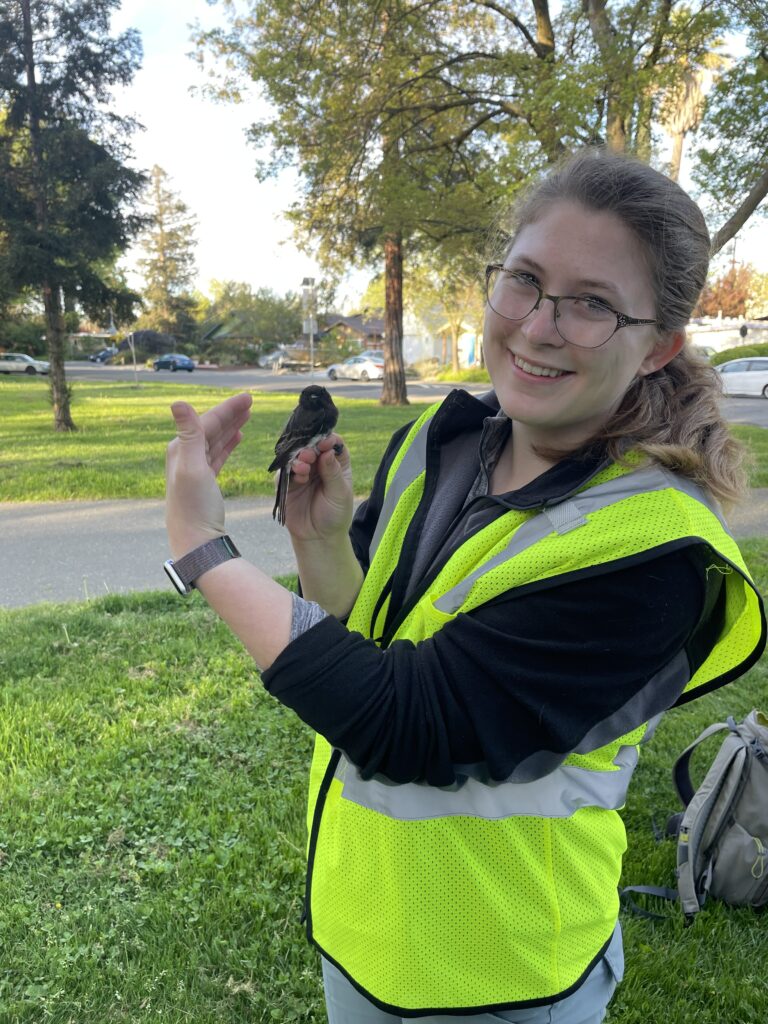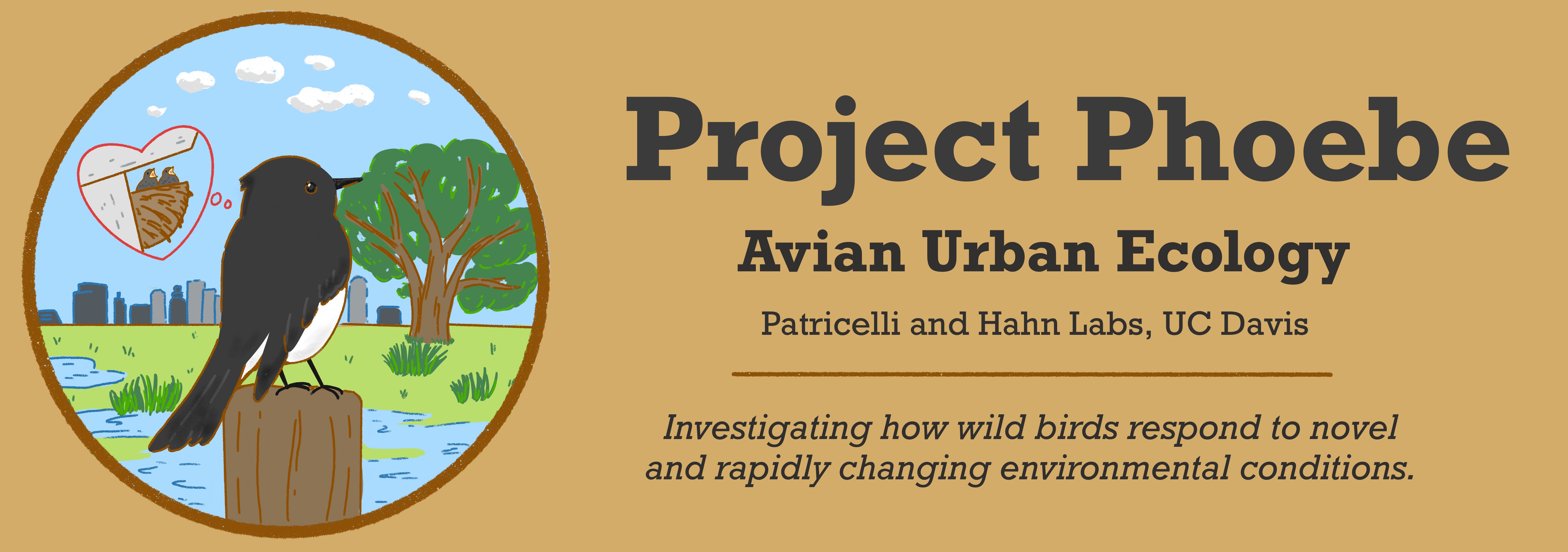Nestlings!
Several of our Phoebe nests now have nestlings! When these babies hatch, they are tiny, mostly featherless, and helpless. The parents brood them to keep them warm and bring them insects to eat. The nestlings quickly grow to their adult size (17-22 grams), and they are ready to leave the nest in about three weeks (1).
Project Phoebe monitors nestling growth and development by measuring nestlings several times before they leave the nest. We briefly remove the nestlings from the nest, weigh them, and measure the length of their wings. We also collect other samples, such as poop samples that we can use to understand what Phoebes eat. These measurements and samples help us understand how the urban environment impacts Phoebe reproduction.
In addition to monitoring nestling growth, we have been capturing adult birds to fit them with ID bands before releasing them. These ID bands help us distinguish the male and female Phoebe at each nest, allowing us to assess things like how much care each parent provides to the young and how they interact with one another. We will also be able to use them to learn which of our Phoebes survive from one year to the next, and what factors affect their survival.
– Sage
All activities were conducted by trained individuals and approved under federal, state, and university permits–please do not attempt to handle wild birds or their nests yourself.


References
- Wolf, B. O. (2020). Black Phoebe (Sayornis nigricans), version 1.0. In Birds of the World (A. F. Poole and F. B. Gill, Editors). Cornell Lab of Ornithology, Ithaca, NY, USA. https://doi.org/10.2173/bow.blkpho.01


Way cool! Some extremely valid points! I appreciate you writing this article and
also the rest of the site is really good.